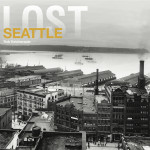
What an awesome book. It switches between two narratives:
The White City, a neoclassical court of stunning buildings, lit up with the first spotlights. Think of Washington's Mall, but more cozy. This was a model for American urbanism, the 1893 World's Columbian Exposition in Chicago.
The Black City, Chicago's nickname for its grime, dirt, and violence. The chaos in Chicago, at a turning point in American civic art and architecture, provided cover for a madman. Herman Mudgett aka H. H. Holmes built a Black City castle, processing the bodies of his victims like pigs at the stockyards.
The book is insanely well researched but reads like a novel. Highly recommended to anyone interested in city planning, serial killers, historical research, postbellum America, or a good yarn.
A great follow-up would be a history of Chicago in the 1900s, where you watch Burnham and other characters take their Fair concepts and methodically apply them to the city at large, with the 1909 Plan of Chicago and all of the changes it brought. I'm going the other way, reading Homicide.
(Devil in the White City by Erik Larson)
